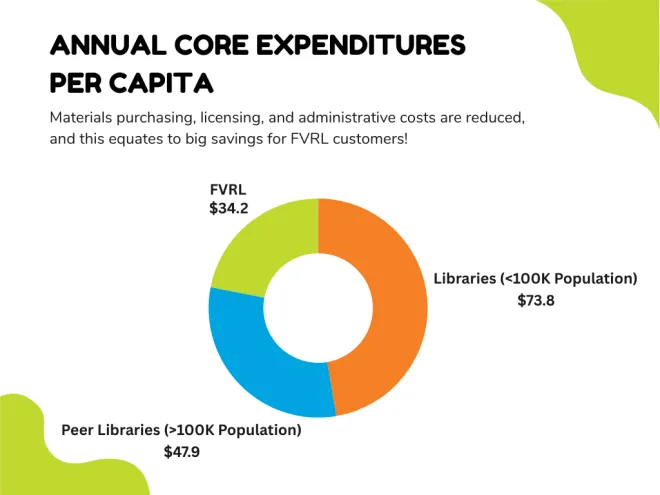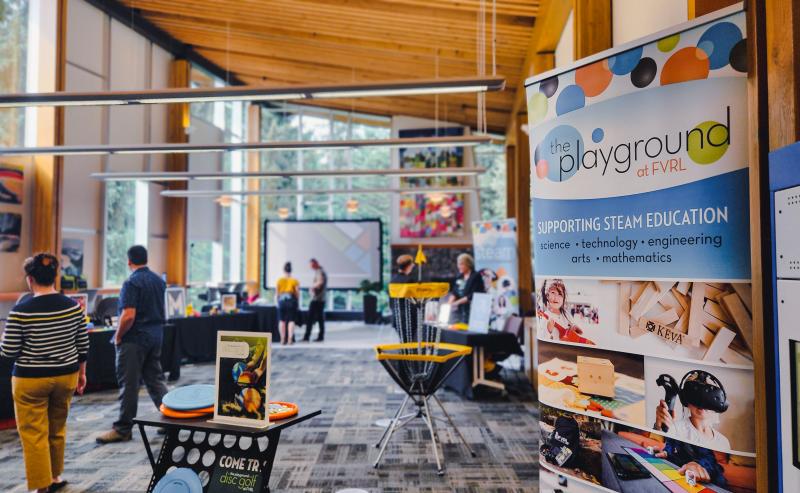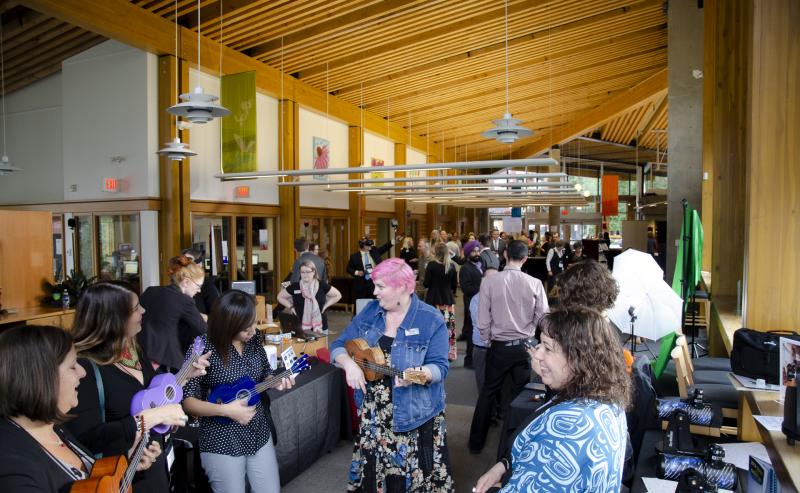FVRL is the largest public library in BC serving a total population of over 928,000 (2025 estimate), operating under the highly efficient regional-library model built on sharing resources and centralizing and minimizing costs, across fifteen (15) local governments and their twenty-five (25) libraries that fall within its service area.

Resource Sharing
Increased Access to Materials: Customer’s can access a very broad collection of books and digital media nearing $1M items, and other specialized resources.
Inter-library Loans: Customers can borrow items from any of FVRL’s twenty-five (25) libraries, with pick-up from their preferred FVRL library.
Inter-library Systems Loans: Through FVRL’s partnerships, customers can borrow offered library materials at sixty (60) other public libraries near/adjacent to the FVRL service area and any other library in most parts of the world via the Inter-Library Loan program.
Specialized Services
Non-Traditional Library Materials: FVRL is one of the leaders in Canada in non-traditional materials lending through The FVRL Playground™ lending items such as Ukuleles, Robots, Radon Meters, Telescopes, Bird Watching Backpacks… and much more!
E-Learning Tools & Various Databases: Customers can access over 6,000 online video courses (LinkedIn Learning), learn over seventy (70) new languages (Mango Languages) and access a variety of information via the many online databases.
Specialized Skilled Staff: Centrally located highly trained staff can be efficiently utilized to improve library staff’s ability to deliver diverse, robust and learning-outcome focused programs, to assisting its local government members in their library location and build decisions.

Free Library Programs
In-Person & Virtual: All twenty-five (25) FVRL libraries offer a wide variety of both standard and locally inspired programs to children, teens and adults at no charge. In 2024, FVRL libraries delivered over 10,700 in-person programs with over 389,400 customers attending. FVRL also offered pre-recorded virtual programs with over 76,600 views.
Learning Outcome Focused: All programs are carefully designed to support “21st Century Literacy” skill development, including provincial school targeted learning outcomes, creativity and critical thinking.
Experiential Programs: Many programs are inter-active and offer customers unique experiences like learning to code with a robot (Sphero Sparx) or how to play an instrument (Ukulele), or “visiting” a distant locale (Virtual Reality).

Greater Community Outreach & Support
Equity: FVRL offers public computers for use in-library, free wi-fi, and one-on-one support to navigate new technology plus, ensuring critical resources are in place for all.
Building Community: As a community gathering space and host of community celebrations and events, libraries are a key place to meet with friends and connect with new community members.
Mobile & Outreach Services: FVRL “delivers the library” to people who can’t visit, through home delivery, curated materials selection, and library staff visits to food banks, shelters, correctional institutions and more.

Cost Efficiency & Resilience
Operational Resilience and Continuity of Services: With twenty-five (25) library locations managed centrally, an integrated and redundant IT system, a fleet of library materials delivery trucks, digital and physical materials and programs and almost four hundred (400) employees, FVRL is well positioned to respond quickly to challenges.
Economies of Scale: Materials purchasing, licensing, and administrative costs are reduced and this equates to big savings for FVRL customers! FVRL’s annual core expenditures per capita are $34.20, the lowest of its peer libraries (10 libraries serving > 100,000 population) averaging $47.90, and much lower than libraries serving a population of less than 100,000 averaging $73.80.*
*Stats from the most recent (fiscal 2023) BC Provincial Government public library survey. Core expenditures per capita are all annual expenditures, excluding only facility and capital costs, to ensure comparability. Facility and capital costs add on average an additional 10% to the stated per capita core expenditures.



